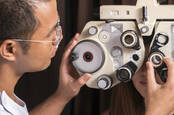This article is more than 1 year old
Not so fast AI Doctor, the FDA would like to check how good you really are at healthcare
I see you're using adaptive algorithms. Step this way for some regulation please
The US Food and Drug Administration has proposed a framework on how it might regulate medical devices that rely on AI and machine learning algorithms.
The report published this week outlines two types of algorithms for the purposes of regulation: “locked algorithms” and “adaptive algorithms.”
Locked algorithms provide the same result each time they’re fed the same input. The answers are normally based on things like look-up tables, decision trees, or classifiers. An adaptive algorithm, however, will “change its behavior using a defined learning process.” The outputs may change for a given set of inputs as the learning process is tweaked with new data.
Sound familiar? It essentially describes modern deep learning systems that require supervised training to learn how to perform a specific task. It’s these types of algorithms that are more of a pain in the neck for the FDA to deal with. At the moment most devices that use AI or machine learning and have FDA approval rely on the use of locked algorithms.
There has been an explosion in using deep learning and neural networks to pick up patterns in medical data for diagnosis. So it’s no surprise that the FDA has to eventually come up with strict guidelines on how to deal with these sorts of systems.
The framework states that medical devices that rely on adaptive algorithms will have to be approved before they can be commercialized. The FDA will be looking at how the changes affect the devices’ performance and the impact it has its effectiveness. A balance has to be struck between allowing software to continuously change if it improves over time and the safety of a patient.
For example, a manufacturer might retrain a neural network that analyses mammograms for tumors with a new, larger dataset to increase its accuracy. Or, maybe, the same dataset is used but the developer decides to include more information from different sources, such as images of the outer skin of the breasts. In these scenarios, the algorithm would have to be resubmitted for FDA approval before it could be used commercially.
The same requirement is also needed if the system expands beyond what it was originally intended for. If a manufacturer decides that its device that studies retinal scans for diabetic retinopathy can also measure if a patient has high blood pressure or not, it’ll have to contact FDA officials to check if the device can be used for that purpose.
Obtaining FDA approval can be a difficult and long process. “The traditional paradigm of medical device regulation was not designed for adaptive AI or ML technologies, which have the potential to adapt and optimize device performance in real – time to continuously improve healthcare for patients,” the report said.
“The highly iterative, autonomous, and adaptive nature of these tools requires a new, total product lifecycle (TPLC) regulatory approach that facilitates a rapid cycle of product improvement and allows these devices to continually improve while providing effective safeguards.”
The guidelines in the report aren't set in stone, however. At the moment the framework is a proposal and the FDA is looking for feedback before any policies are implemented. ®

